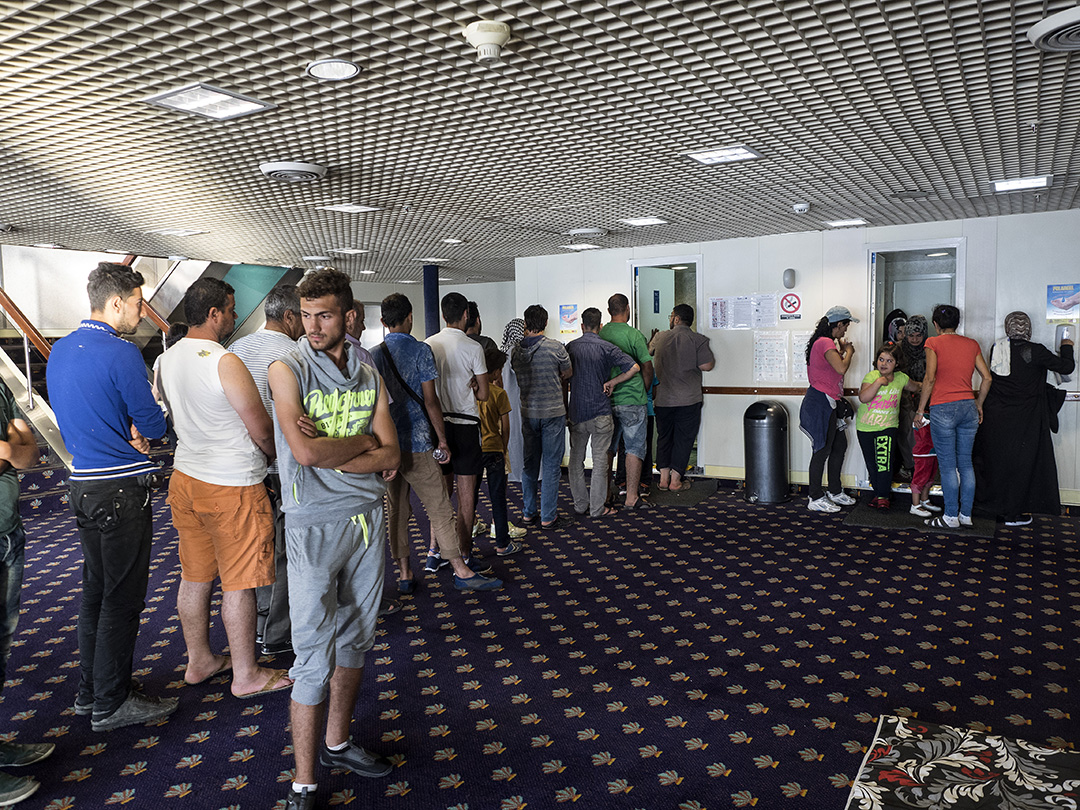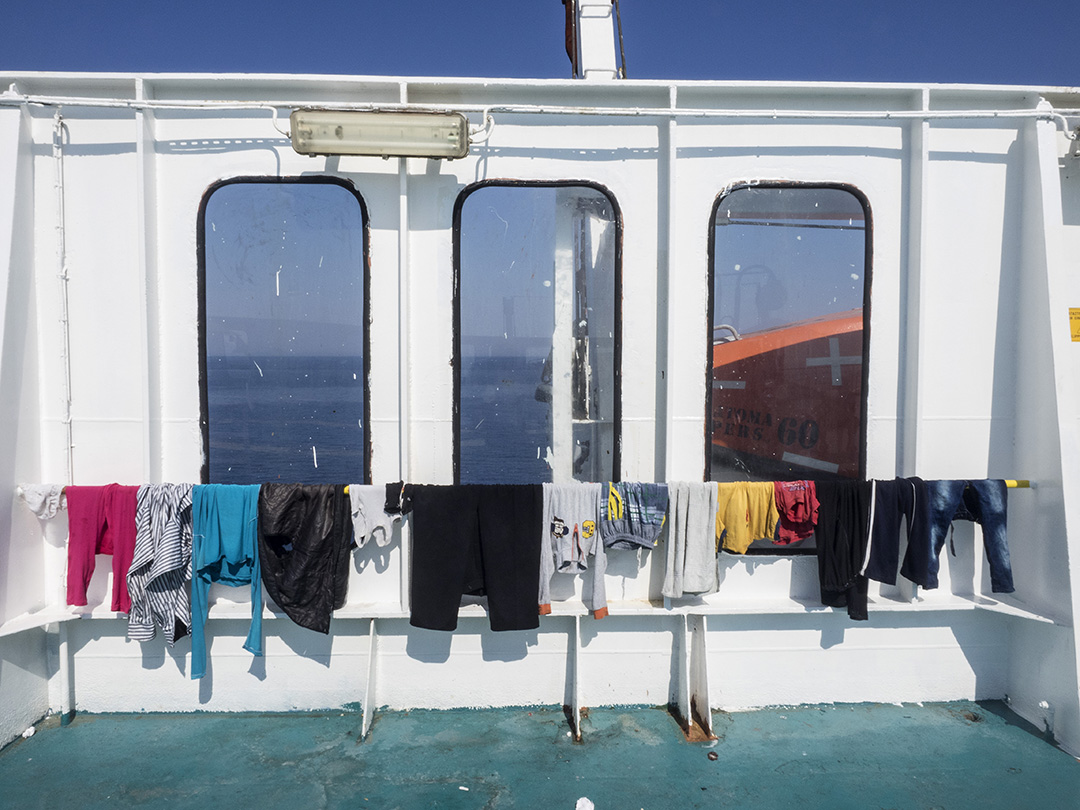An Aegean journey of despair
Kathimerini boards the Eleftherios Venizelos ferry as it transports 2,500 refugees from Lesvos to Piraeus

SPECIAL REPORTS 14.09.2015 • REPORTING: YIANNIS PAPADOPOULOS • PHOTOGRAPHY: ENRI CANAJ • VIDEO EDITING: PANOS VOUTSARAS
Just when dawn breaks over the Aegean Sea, 29-year-old Syrian refugee Alaa Alseikh Ibrahim leans on the railing of the Eleftherios Venizelos ferry boat, gazing at the surf as it cuts through the water. “This sea nearly killed me,” he says of his crossing in a rubber dinghy from the coast of Turkey to the Greek island of Lesvos. He remembers how he and his fellow passengers battled the waves for half a day after losing their bearings. His neck is still an angry sunburnt red. But, now he appears relieved.

“This ship is different from our previous exprience. We feel safe now,” he says. “This ship is a bridge to a better life.”
On the night the ferry set sail, Ibrahim was among 2,500 anxious refugees and migrants waiting to board the ANEK Lines ship at the port of Mytilene. Five coast guard and police patrol cars parked nose to tail formed a no-go zone of a few dozen meters between the refugees and the ferry's ramp. The officers tried to hold them back – often shouting, pushing or using their batons – so they wouldn't storm the ship and risk being trampled. Ibrahim, a mechanical engineer, acted as translator.
“We told them to be patient, that they would all be allowed on the ship,” he says.


















